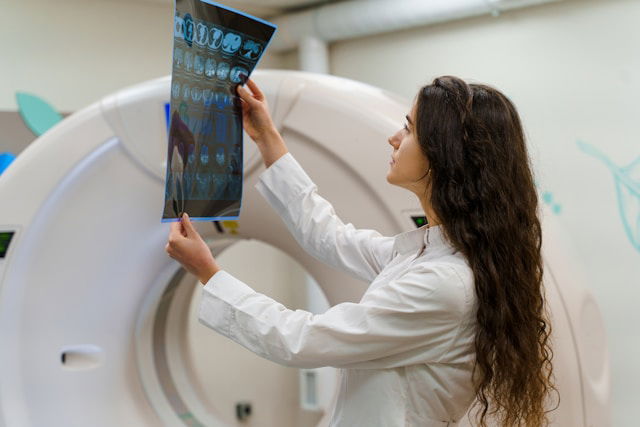
Every year, strokes take the lives of millions of people around the world. A stroke happens when the blood flow to the brain is blocked, and brain cells begin to die.
The longer the delay in treatment, the more damage is done to the brain.
One of the most common types of stroke is called ischemic stroke, which occurs when a blood vessel in the brain gets blocked, cutting off oxygen and nutrients.
To improve how we detect and treat this condition, a research team from POSTECH (Pohang University of Science and Technology) in South Korea has developed a new high-tech method. This new approach uses both light and sound to get a better picture of what’s happening inside the brain, especially in the early stages of a stroke.
Currently, common tools like CT scans and MRI machines help doctors look at the brain, but they have some limits. For example, they cannot always detect early changes in blood vessels, and they don’t give real-time images. Also, many studies on strokes are done using animal models, which may not give fast or wide enough information.
The POSTECH researchers introduced a new technique called photoacoustic computed tomography, or PACT. This system combines laser light and ultrasound waves to create detailed images of blood vessels in the brain.
The team used both straight-line and spinning scanning methods to take images from many directions. They then combined these images to create a clear, 3D picture. This made it possible to see changes in blood vessels in small animals as they happened, without surgery.
In addition to this, the scientists developed a new software algorithm. This program allowed them to watch how much hemoglobin (the part of red blood cells that carries oxygen) was present in the blood.
It could also measure how much oxygen was in each blood vessel using different kinds of light in the near-infrared range. This meant they could see which parts of the brain had good or poor blood flow, as well as how the brain tried to heal itself by forming new blood vessels.
The results from this new method matched well with results from standard lab tests that study tissues under a microscope. This shows that the new system is accurate and could be very useful for tracking how stroke patients recover over time.
The researchers highlighted that one of the most important outcomes of their work is that it can be done without using contrast dyes, which are often needed in traditional scans and can have side effects.
They believe this new tool could open up better and safer ways to study and treat not just strokes, but also other diseases that affect the brain and blood vessels.
If you care about stroke, please read studies about how to eat to prevent stroke, and diets high in flavonoids could help reduce stroke risk.
For more health information, please see recent studies about how Mediterranean diet could protect your brain health, and wild blueberries can benefit your heart and brain.
The study is published in Advanced Science.
Copyright © 2025 Knowridge Science Report. All rights reserved.



